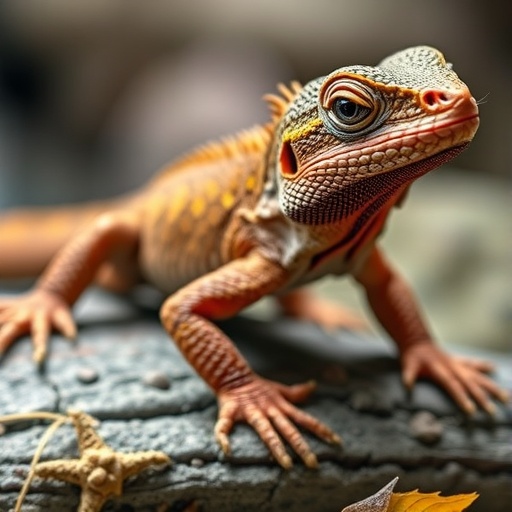In a groundbreaking development bridging evolutionary biology and quantitative finance, researchers from The University of Queensland have unveiled a novel mathematical model integrating the micro- and macroevolutionary processes that shape biodiversity. This cutting-edge framework, pioneered by Dr. Simone Blomberg of the School of the Environment, is the first of its kind to mathematically merge short-term natural selection dynamics with the extensive evolutionary trajectories species undergo across millions of years.
For decades, the evolutionary biology community has been embroiled in debates over whether microevolutionary mechanisms—those genetic changes observable within populations across relatively brief periods—are sufficient to explain the broader patterns and trends observed in macroevolutionary time spans. Dr. Blomberg’s innovative approach confronts this question head-on by developing a unified model that harmonizes these scales of evolutionary change through the analysis of correlated trait evolution.
At its core, the model leverages sophisticated multivariate statistics, adapted from financial mathematics originally designed to analyze share portfolios. These methodologies, which capture how the values of different assets co-vary over time, are creatively repurposed to examine how multiple genetic traits evolve collectively within and across species lineages. This cross-disciplinary strategy illuminates the intricate genetic correlations that guide evolutionary trajectories, providing a new lens through which to examine trait diversification.
The inspiration to adapt portfolio theory from economics for evolutionary studies resonates with the historical interplay between these fields. Since Charles Darwin’s epoch, ideas circulating in economic thought have enriched biological theories. Dr. Blomberg’s model unfurls this tradition by demonstrating how the mathematics of asset price covariation can elegantly describe the evolution of complex traits influenced by fluctuating selective pressures and genetic constraints.
To validate and exemplify the utility of the model, Dr. Blomberg and collaborators applied it to an exceptional dataset from a clade of Central American lizards known as Anolis. This genus is renowned for its vivid coloration and ecological diversity, with seven distinct species meticulously characterized by eight phenotypic traits, including leg bone lengths, jaw dimensions, and head width. By mapping these phenotypic variations onto the mathematical framework, the researchers captured the evolutionary interrelationships among traits as they diversified across species.
The integration of trait covariation into the model marks a significant departure from traditional evolutionary models, which often evaluate traits in isolation. Here, advanced geometrical methods enable the reconstruction of the G-matrix—the quantitative genetic matrix that encapsulates genetic variances and covariances among traits—along phylogenetic trees. This allows for an accurate depiction of how genetic architecture has co-evolved with species divergence over geological timescales.
Such a comprehensive model has far-reaching implications for evolutionary biology. It opens up novel opportunities for researchers to investigate how natural selection shapes not only individual traits but also their genetic interdependencies. By simulating trait evolution under varying selective regimes, scientists can rigorously test hypotheses regarding evolutionary convergence, divergence, and the constraints imposed by genetic correlations.
Moreover, the model’s capacity to straddle both short-term genetic changes and long-term species evolution elevates it as a powerful tool for exploring unanswered questions about the evolutionary process. It can illuminate how microevolutionary dynamics scale up to macroevolutionary patterns, resolving longstanding controversies in the field. By bridging this gap, the framework paves the way for a more integrated understanding of how biodiversity unfolds over time.
The significance of this research extends beyond empirical data on Anolis lizards. Dr. Blomberg encourages the broader scientific community to adopt and adapt this modeling framework for diverse taxa, promoting widespread testing and validation. The model’s applicability to multispecies trait datasets could revolutionize comparative evolutionary studies and broaden our insights into the genetic underpinnings of phenotypic diversity.
Technically, the model employs multivariate statistical tools that account for trait covariance structures evolving along phylogenies, incorporating both genetic drift and natural selection forces. By adapting financial mathematics concepts such as covariance matrices and portfolio variance optimization to biological data, the model quantifies evolutionary trajectories within a rigorous quantitative context, allowing reproducible predictions and hypothesis testing in evolutionary genetics.
The research, published in Evolution Letters, not only contributes a novel theoretical advance but also features publicly shared datasets, including the comprehensive Anolis trait data assembled by a Virginia Tech-led team. This open access to data sets an important precedent for transparency and collaborative progress in the evolutionary biology community.
In summary, this inventive synthesis of biology, mathematics, and economics exemplifies the increasingly interdisciplinary nature of modern scientific inquiry. Dr. Blomberg’s model represents a paradigm shift in evolutionary modeling by formalizing the integration of micro- and macroevolution into a cohesive mathematical framework. Its use of advanced multivariate techniques and cross-disciplinary inspiration promises to catalyze new discoveries regarding the genetic architectures that drive species evolution.
The study heralds a future where the evolutionary histories of organisms are comprehensively understood within quantitative frameworks, allowing precision in deciphering the forces that generate the remarkable diversity of life on Earth. As researchers worldwide begin to apply this model to various organisms and datasets, it may well become a foundational tool in evolutionary genetics and comparative biology.
Subject of Research:
Modeling of trait evolution combining microevolution and macroevolution using mathematical frameworks adapted from financial portfolio theory applied to quantitative genetics.
Article Title:
Multivariate Trait Evolution: Models for the Evolution of the Quantitative Genetic G-Matrix on Phylogenies.
News Publication Date:
8-Oct-2025
Web References:
DOI: 10.1093/evlett/qraf037
References:
Published research in Evolution Letters by Dr. Simone Blomberg et al.
Keywords:
Evolutionary modeling, microevolution, macroevolution, quantitative genetics, G-matrix, trait covariance, Anolis lizards, portfolio theory, multivariate statistics, phylogenetics, natural selection, evolutionary biology




